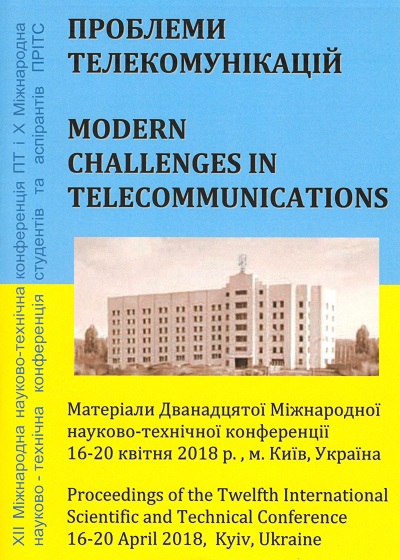ВИКОРИСТАННЯ ТЕХНОЛОГІЇ VLC ДЛЯ ПОБУДОВИ МЕРЕЖ LI-FI ТА ПРИНЦИП ЇЇ ПРАКТИЧНОЇ РЕАЛІЗАЦІЇ
Анотація
The using of the VLC as a basic technology for building Li-Fi systems
Further development of wireless systems requires the solution for many issues related to energy efficiency or limited frequency resources. One possible way to overcome such issues is using the Li-Fi technology. This work describes the basic architecture of the Li-Fi system based on VLC technology.
Посилання
Taner Cevik and Serdar Yilmaz “An overview of visible light communication system” International Journal of Computer Networks & Communications (IJCNC) Vol.7, No.6, November 2015.
Farooq Aftab, Muhammad Nafees Ulfat khan,Shahzad Ali «Light fidelity (Li-Fi) based indoor communication system» International Journal of Computer Networks & Communications (IJCNC) Vol.8, No.3, May 2016.
Романов А.И., Федюшина Д.М, Донг Т.Т. Использование VLC в качестве базовой технологии при построении беспроводных Li-Fi сетей. Материалы XХII МНТК «Современные средства связи», Минск, Респ. Беларусь ; 2017, С17-19.
##submission.downloads##
Як цитувати
Номер
Розділ
Ліцензія
Авторське право (c) 2018 Дарія Михайлівна Федюшина, Tho Thi Dong, Олександр Іванович Романов

Ця робота ліцензується відповідно до Creative Commons Attribution 4.0 International License.
Authors who submit to this conference agree to the following terms:a) Authors retain copyright over their work, while allowing the conference to place this unpublished work under a Creative Commons Attribution License, which allows others to freely access, use, and share the work, with an acknowledgement of the work's authorship and its initial presentation at this conference.
b) Authors are able to waive the terms of the CC license and enter into separate, additional contractual arrangements for the non-exclusive distribution and subsequent publication of this work (e.g., publish a revised version in a journal, post it to an institutional repository or publish it in a book), with an acknowledgement of its initial presentation at this conference.
c) In addition, authors are encouraged to post and share their work online (e.g., in institutional repositories or on their website) at any point before and after the conference.

